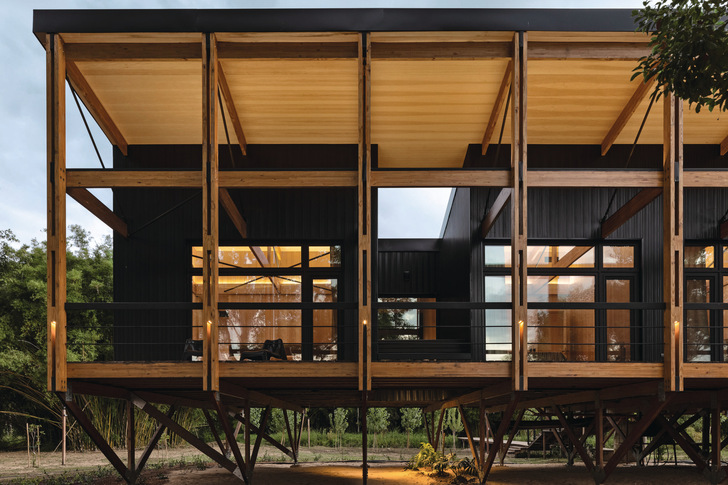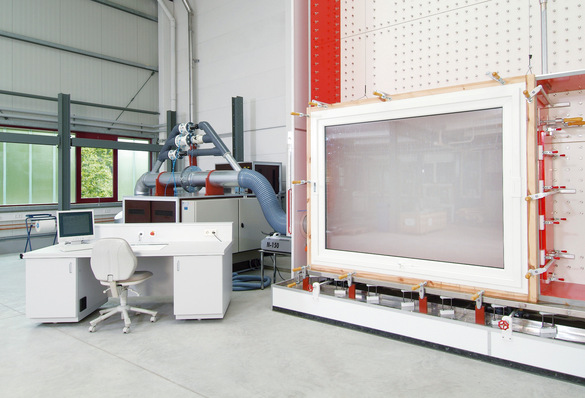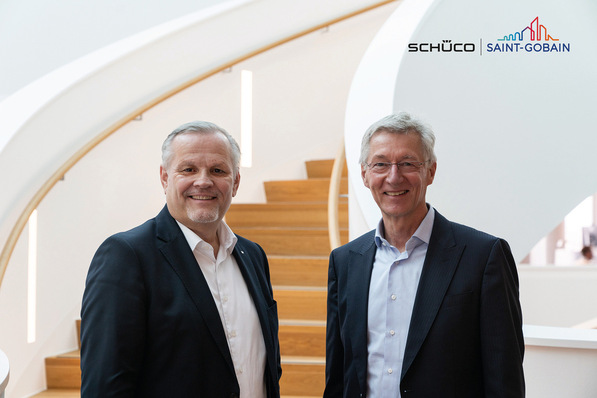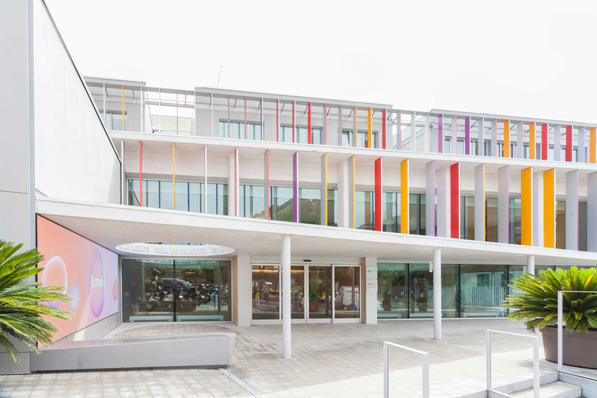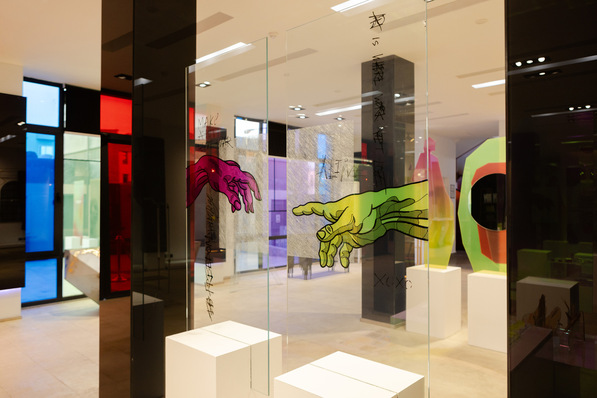This holiday home can be reached from Buenos Aires in an hour via boat through the narrow twists and turns of the Paraná River. The property is located in the middle of a delta on a small island. However, building a house on the marshy terrain was not without its problems.
Amphibious construction
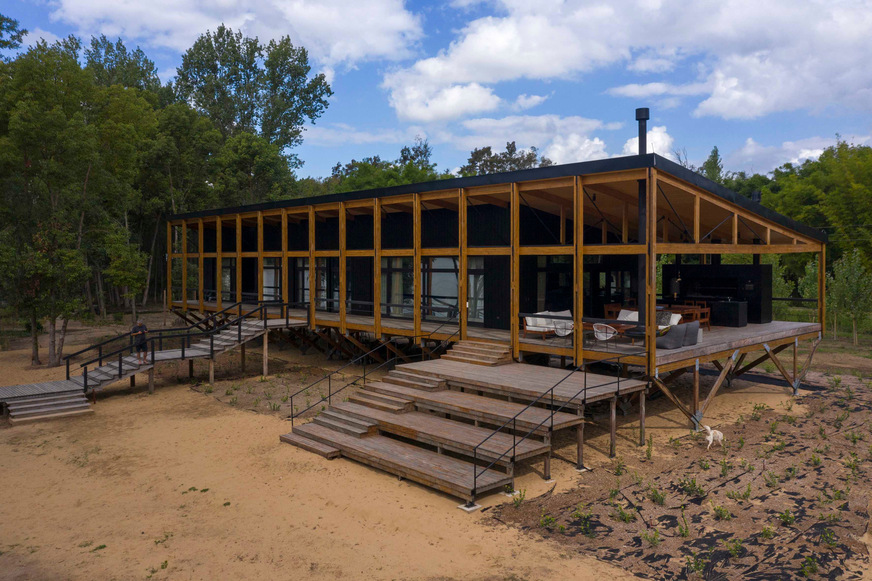
Schüco International KG
That is why MAPA Architects opted for the concept of an amphibious house. The term describes a construction method that allows the building to adapt to rising and falling water levels. Wooden stilts lift Casa Biguá two metres above the ground to protect it from periodic flooding in the Paraná Delta. The building that rises above the floor plate is also a lightweight timber structure, in keeping with the traditional construction methods used on the islands of the delta. The house was built using prefabricated units that could be transported on small boats.
A third element of this project was passive house construction. Given the frequent power outages and humid climate in the region, the low energy consumption and good air quality of this type of building appealed to the clients of the building. They enlisted the Argentine architect Pedro Reyna, an accredited passive house designer, who worked together with construction manager Joaquín Berdés to successfully adapt the unusual construction project to the high standards of the Passive House Institute.
A house within a house
With a floor area of 400 square metres, the building is especially large. It not only appears airy and light, but it also adapts to the climate thanks to its special construction. It is covered by a huge mono-pitch roof, which offers protection and shade for the rooms below. The house itself is “slotted” under this roof. The bedrooms, bathrooms and living rooms are spread over 220 square metres. The very spacious 175 square metre deck is used for outdoor living.
Sustainable construction materials
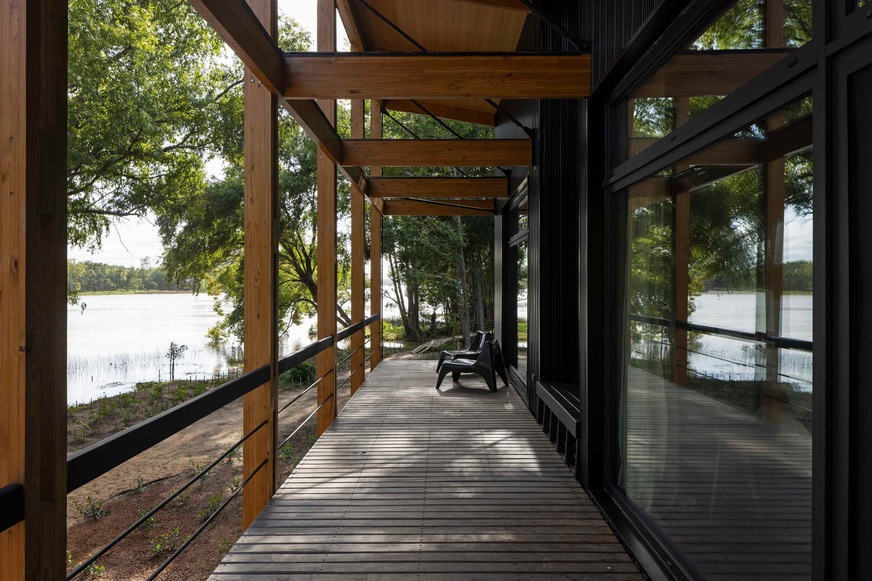
Schüco International KG
The base structure is made of solid anchico wood – a hardwood that is highly resistant to cycles of wetness and dryness. The structure above the floor plate, including the roof beams that are more than 13 metres long, is made from impregnated glue-laminated slash pine timber.
PVC-U window and door systems from Schüco were selected for the openings. In terms of energy efficiency and sustainability, the Schüco Living series impressed the clients with its technical durability and the recyclability of its PVC-U profiles.
As one of the first passive houses in Argentina, Casa Biguá requires very little energy for heating and cooling. An air-source heat pump feeds into the heating and cooling system. Due to the humid climate in the delta, ambient air conditioning was one of the focal points of the building service concept.
Highly insulated building envelope
An essential feature of the passive house construction method is airtightness of the highly thermally insulated building envelope. Structural insulated panels, also known as SIPs, were used for these external timber walls, as they retain their insulating properties even in humid conditions and low temperatures.
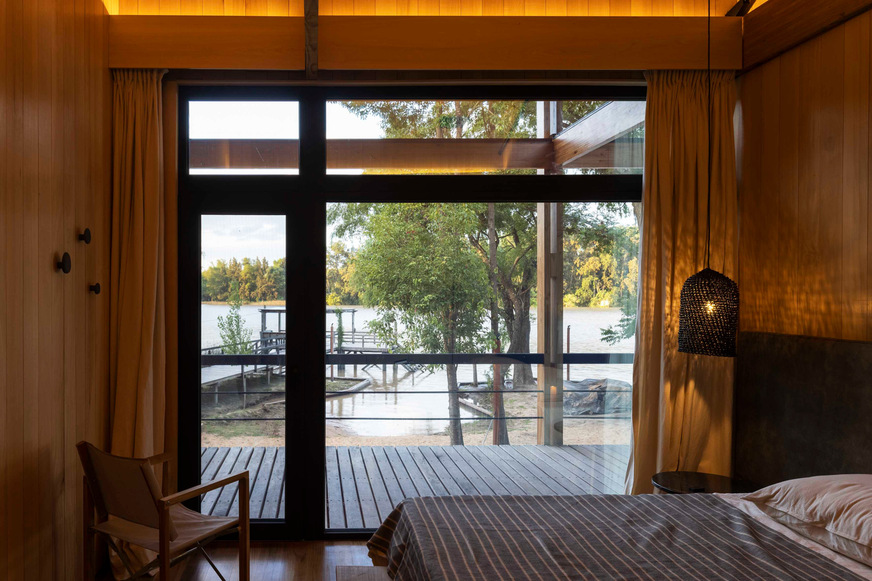
Schüco International KG
For the openings, Schüco partner El Bulevar Aberturas recommended the Schüco Living 82 MD window system as it is suitable for passive houses, as well as an appropriate entrance door from the Schüco Living series. The seamless interaction of the various building components is emphasised by the uniform colour scheme, with the PVC-U windows and doors integrated into the black timber outer wall construction.
Low-E and warm edge glazing
The seven-chamber system from Schüco was able to demonstrate its suitability for passive houses with excellent insulation properties (Uf values as low as 0.96 W/m²K) and a permanently high sealing effect. The Schüco Living gasket also helps achieve this, ensuring airtightness for many years.
The strong, anti-corrosion steel profiles in the window and door frames and in the vents and leaves provide long-term stability. Handles and fittings components are sealed against corrosion. With its low-E glass and warm edge spacers, the triple glazing achieves excellent U values (Ug of 0.40 W/m²K).

Schüco International KG







